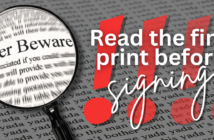Requirement to use new version of Form I-9 began Jan. 22, 2017.
By Deepa Subramanian, Esq.
As of Jan. 22, 2017, United States Citizenship and Immigration Services (USCIS) began requiring all employers to use a new version of Form I-9 for employment eligibility verification. The approved I-9 revisions include the addition of “smart” features for filling out the form as well content-based changes that add new fields and update the language found in others. In addition to these changes, the new form automatically generates a QR code that will likely be used by U.S. Immigration and Customs Enforcement (ICE) auditors.
The new form, dated “11/14/2016 N” in the document’s lower left corner, is now available for use and can be downloaded from the USCIS website. It is important to note that employers were permitted to use the old version, dated “03/08/2013 N,” through Jan. 21, 2017. As of Jan. 22, 2017, all employers must have made the switch to the new form.
Smart features
The updated version of Form I-9 facilitates compliance by guiding users throughout the process and incorporating various features – drop-down menus, hover text and real-time error notifications – that allow users to reduce errors when completing the form. The new form also includes an alert that is triggered when the system detects a required field is blank or incorrectly completed. Importantly, the new form incorporates a feature that increases compliance by helping ensure the information provided by an individual employee is consistent with the citizenship or immigration status indicated by the employee in Section 1 of the form. The form automatically marks fields that do not apply to an employee’s selected status as “Not Applicable.”
Further, new drop-down menus for the List A, List B and List C document fields in Section 2 are specifically tailored so a user may select only the documents that correspond to the employee’s citizenship or immigration status. If an employee presents a document that does not match the citizenship/immigration status selected in Section 1, the smart form will alert the employer with a notification message and provide instructions on how to proceed.
Content-based changes
The newly revised form also includes content-based changes to the form’s requirements and accompanying instructions. With regard to Section 1, USCIS made a few changes:
- First, USCIS replaced the “Other Names Used” field with “Other LastNames Used” (emphasis added); this change may help avoid potential discrimination issues and heighten privacy protection for transgender individuals and others who have changed their first names.
- Second, the new form requires certain foreign national employees to enter either their foreign passport information or their Form I-94 information, but not both as in the prior version.
- Third, the new form allows multiple preparers and/or translators to participate in its completion. Each preparer and translator used must complete a separate “Preparer and/or Translator” section. If the employee does not use a preparer or translator, the employee will check a new box labeled “I did not use a preparer or translator.”
- USCIS also made changes to Section 2 of the form by adding two additional fields of information to be completed. First, USCIS included a new field at the top of Section 2 labeled “Citizenship/Immigration Status.” This new field requires the employer to input the number correlating with the citizenship or immigration status input by the employee in Section 1. Second, USCIS included a new field that allows employers to input additional information that is currently being notated in the margins of the current Form I-9.
Key takeaways
The new smart Form I-9 promises to make compliance easier for employers. Although employers can access and complete the new Form I-9 electronically, they should still print the completed form (unless complying with the regulations’ requirements for electronic storage), obtain handwritten signatures, store the hard copy securely and follow the same re-verification practices they have followed when working with the previous paper version of the form. ■
- The new version of the form can be found at www.uscis.gov/i-9.
Deepa Subramanian, Esq., represents employers in all aspects of employment law, including employment litigation and counseling, at Ogletree, Deakins, Nash, Smoak & Stewart, PC. She advises and defends clients in federal and state employment-related lawsuits, including actions alleging discrimination, harassment, retaliation, violations of wage and hour law and breach of contract. She can be reached at [email protected].




